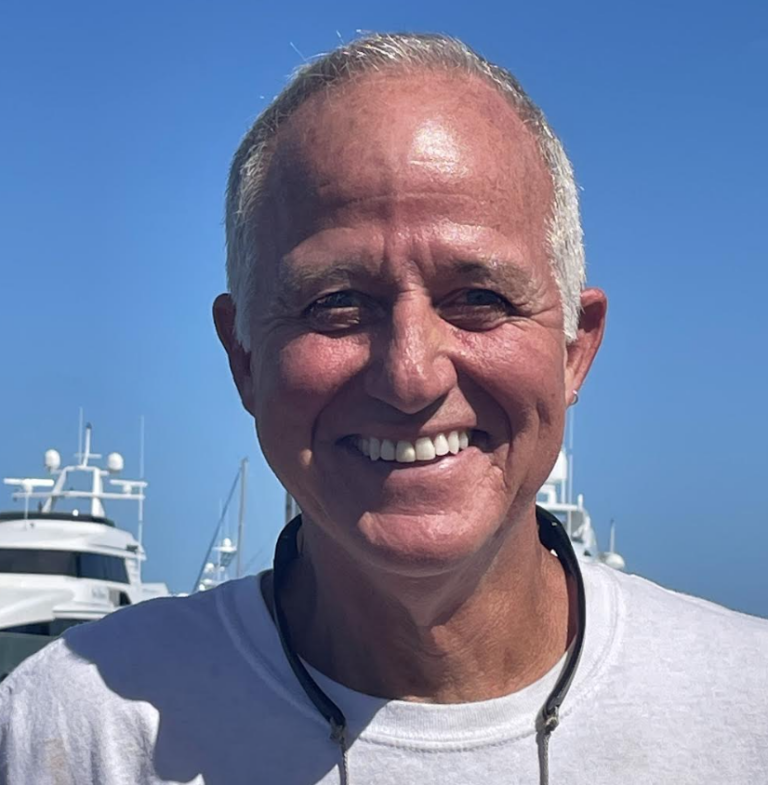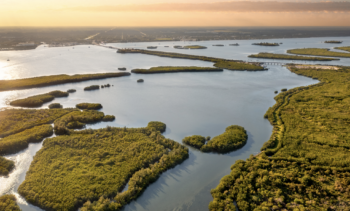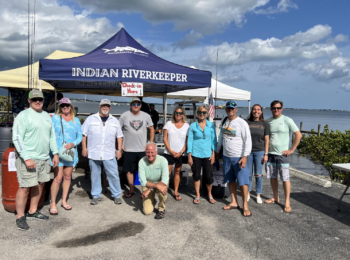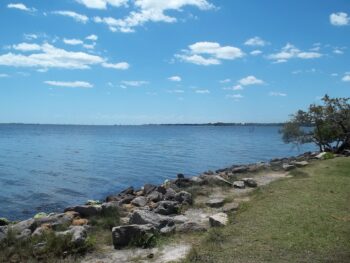Who Is Waterkeeper: Jim Moir, Indian Riverkeeper
By: Thomas Hynes

Jim Moir has been Indian Riverkeeper in Florida since 2022, though the organization has been around since 2000. Jim is technically the fifth Indian Riverkeeper, though he had been a board member for several years before that. When the last Riverkeeper resigned, Jim was on his way down to the Florida Keys, but was intrigued by the opportunity.
“I thought well maybe I can do that,” says Jim. “But I did not realize how hard it is being a Waterkeeper. I‘d been a happy board member but was removed from the day-to-day. I had been involved in this movement for twenty years. But I didn’t quite understand what it was to be a member of Waterkeeper Alliance.”
The Indian River is about 156 miles long, and covers about a third of the east coast of Florida. It’s a big range with lots of different impacts and influences. The southern end connects to Lake Okeechobee, and the northern end abuts Cape Canaveral and all that the space industry entails. Technically speaking, the term river is somewhat of a misnomer. The system consists of several estuaries that make a lagoon, which is separated from the ocean by barrier islands. 
Jim grew up in Florida, on Key Biscayne, a barrier island in Miami. His father studied at the marine lab at the University of Miami and then taught science. It should come as no surprise then that Jim has been a ‘water boy’ his entire life. His professional resume certainly supports this. Jim has worked as a boat builder, a marine surveyor, and a safety diver. In the early 2000s, he worked on an ocean research vessel that followed marine mammals – such as whales, dolphins and manatees – and tagged the animals to better understand strandings, migration and behavior.
“It was pretty natural for me to become engaged in local environmental issues,” says Jim.
The beguiling and wonderful beauty of the Indian River lagoon system certainly helped compel him to get further involved. There was something about the slate gray water that really intrigued him. He was also amazed by what was wiggling between his toes when he walked on the grass flats. This area is extremely rich in biodiversity. A while ago in one ten meter square of seagrass, an astonishing 55 fish species could be found.
“We straddle several different ecotones at once,” says Jim. “We are subtropic, tropical. We are a rare convergence zone, where weather systems meet. We are where the continental shelf and gulf stream meet, where freshwater and saltwater meet. We have identified at least 16 endangered species of fish that are endemic to the area. There’s even a subspecies of resident dolphins. This biodiversity is the real treasure of the Treasure Coast.”
Sadly, this wonderful biodiversity is threatened. In the last ten years, about 60% of those vital seagrasses have been lost, as have nearly 2,000 manatees starved to death, as have millions of acres of wetlands, to list just some of the area’s ecological loss.
 “Florida has these big challenges. We have a history of mismanaging our resources and now we have over 1,000 people moving into the state every day, and that’s a lot of digestive tracts,” says Jim. “How we terraform the land and how that affects our waterways is functionally the most important and dangerous part of living in coastal Florida. We haven’t got a good history of doing it the right way. We tend to go for cost expediency as opposed to being environmentally sensitive. As they say, Florida has a history of selling land by the gallon.”
“Florida has these big challenges. We have a history of mismanaging our resources and now we have over 1,000 people moving into the state every day, and that’s a lot of digestive tracts,” says Jim. “How we terraform the land and how that affects our waterways is functionally the most important and dangerous part of living in coastal Florida. We haven’t got a good history of doing it the right way. We tend to go for cost expediency as opposed to being environmentally sensitive. As they say, Florida has a history of selling land by the gallon.”
A lot of the issues facing Jim’s watershed can be chalked up to what he describes as the ‘political weirdness of Florida.’ But it’s not the only cause. One surprising change, at least to those out of state, has been the decline of the citrus industry, with some estimates showing a 75% reduction in production. That loss has opened the floodgates for development. Golf courses, in particular, have filled the void. To Jim’s chagrin, these uber exclusive sites are referred to as conservation openspaces, despite the damage presented by these facilities’ use of pesticides and fertilizers on the courses and biosolids on the turf grass fields.
“The Florida Way of bulldozing and terraforming is allowing pollution to be flushed directly into our waterways. We now have areas of toxic muck that are many feet thick. We have these algal blooms and fishkills that are self supplying their own nutrient loads,” says Jim. “We have to look at land use patterns. We are filling up all these open spaces that were naturally pervious with impervious surfaces and drainage ditches. Now those surfaces are polluting our waterways.”
Rocket ships, and Florida’s growing space industry, poses another real concern for the watershed. He runs through scenarios where natural gas is transported across the state to be compressed, then put on train cars to travel on the same rails that high speed passenger rail uses, before it crosses national park land, so that it can be combusted as part of some billionaire’s space fantasy. If all that sounds like a ticking time bomb, it’s because that’s exactly what it is.

Despite these challenges and many others, Jim remains hopeful. He is by no means naive, and understands that a rethinking of development, transportation, and agriculture is necessary. However, being a father and husband, he says, makes this idealism necessary.
“We have to be optimistic. If we get too full of doom, we risk turning people off from engaging in this conversation and engaging in this fine work,” says Jim. “We have to figure out honestly what our individual impacts on our ecosystems are. And rather than trying to have dominion over the world, we need to figure out how to live with the world and be part of the ecosystem. Water is our heart and our soul. We spiritually are connected to this place in a way that is fundamentally important and missing that is going to be to our peril.”